Everything You Always Wanted to Know about Jews
Our exhibition The Whole Truth…Everything You Always Wanted to Know about Jews was based on 30 questions posed to the Jewish Museum Berlin or its staff over the past few years. In the exhibition, visitors had their own opportunity to ask questions or to leave comments on post-it notes. Some of these questions are answered here in our website.
-
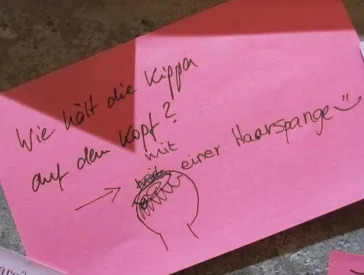
How does a kippah stay on?
Answered by Michal Friedlander, Curator for Judaica and Applied Arts
Essay
2013 -
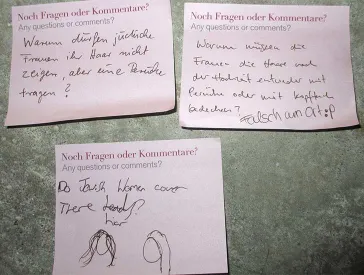
Why do women have to cover their hair with a wig or scarf after getting married?
Answered by Miriam Goldmann, Curator of the Exhibition The Whole Truth
Essay
2014 -
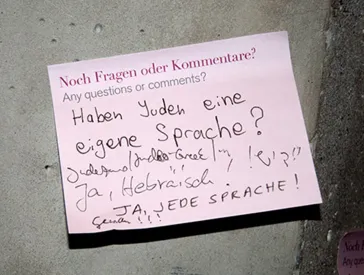
Do Jews have their own language?
Answered by Martina Lüdicke, Curator of the Exhibition The Whole Truth
Essay
2013 -

Why do some Jews rock back and forth while they pray?
Answered by Miriam Goldmann, Curator of the Exhibition The Whole Truth
Essay
2013 -
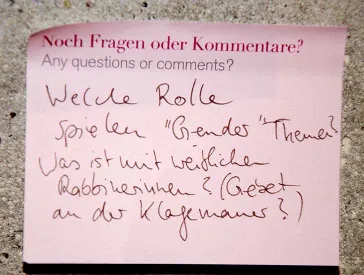
What role do gender themes play? What’s the story with women rabbis?
Answered by Anina Falasca, Curator of the Exhibition The Whole Truth
Essay
2013 -
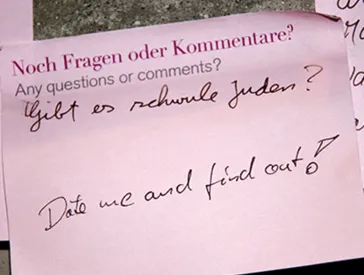
Are there gay Jews?
Answered by Anina Falasca, Miriam Goldmann, Martina Lüdicke, Curators of the Exhibition The Whole Truth
Interview
2013 -
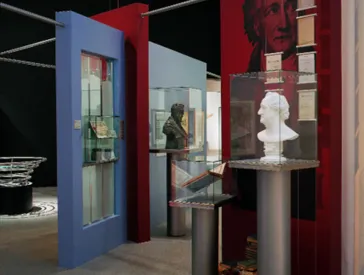
“Was Goethe a Jew too?”
Answered by Berhard Jensen, Library
Essay
2014

